Special Hobby D-558-1 Skystreak
The Douglas D-558-1 Skystreak was the first of three planned transonic research aircraft built for the U.S. Navy and NACA. First flown in 1947 at Muroc, it was turbojet-powered with a nose inlet and short, unswept wings. The fuselage was constructed from magnesium alloy due to its lightweight, heat-resistant qualities. Initially painted scarlet (earning it the nickname Crimson Test Tube), the three D-558-1's were soon painted white by NACA to improve photographic visibility.
Though the D-558-1 never broke the sound barrier in level flight, it came very close, reaching Mach 0.99 and set an official world speed record. Indeed, the Skystreak was never meant to go supersonic (the raison d'etre of the Bell X-1), but instead to spend lots of time exploring the aerodynamics of transonic flight. And this it did admirably over the course of several years. Sadly, the Skystreak also owns the distinction as being involved in the first NACA test pilot fatality, when in 1948 Howard Lilly was killed on take-off due to compressor disintegration.
To me, the D-558-1 is the quintessential early-days jet aircraft: sleek and vaguely retro-futuristic, small and unpretentious. I was excited to find a nice kit in 1/72 scale.
The Kit
The Special Hobby 1/72-scale D-558-1 is a quality kit. There are other offerings: Anigrand does a resin kit, there are a couple vacuformed versions, and then there's a Mach 2 styrene kit. In my experience, unless you have no choice but to build a Mach 2, don't build a Mach 2. The Special Hobby kit comprises 31 pieces in soft gray styrene, 8 in resin (wheels, nose gear flap, intake cone, interior rear wheel well), and 21 photoetch (cockpit details, rear landing gear flaps). There are two versions of clear canopy: the bubble and more streamlined design.
You need 6 grams of ballast to fit into a very narrow spot in the nose (I'm not sure a substance of sufficient density exists on Earth), and so I fit a couple flattened fishing weights in there and then placed a large brass nut aft of the cockpit:
Decals allow 3 for different options and were nice and thin. One odd thing about the decals is that the red stripes in the U.S. insignia come as a separate decals which need to be carefully centered.
Other than that, there is nothing notable about this build, which is a good thing!
I used Tamiya flat red for the base coat and Alclad White Aluminum for the metallics, gave it a pinwash with AK 2071 in the panel lines, AK 2072 on control surfaces, and Tamiya black panel liner for the landing gear. Humbrol Maskol worked great for masking the canopy. Finished with Alclad Semi-Gloss Klear Kote to give it a bit of shine.
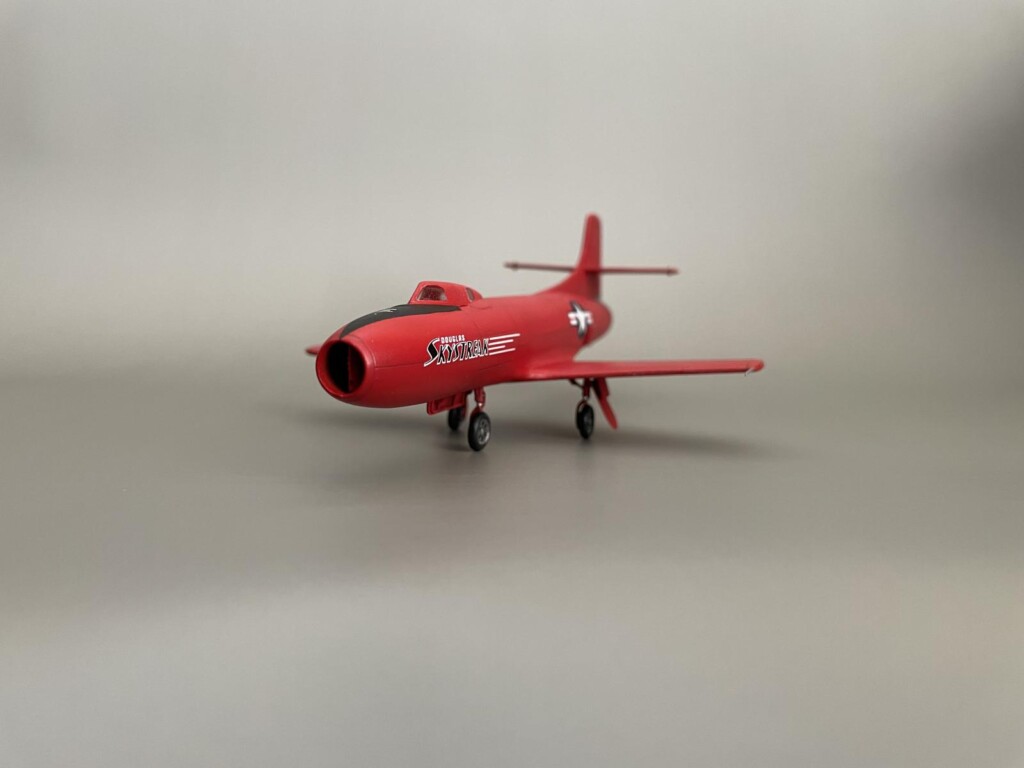
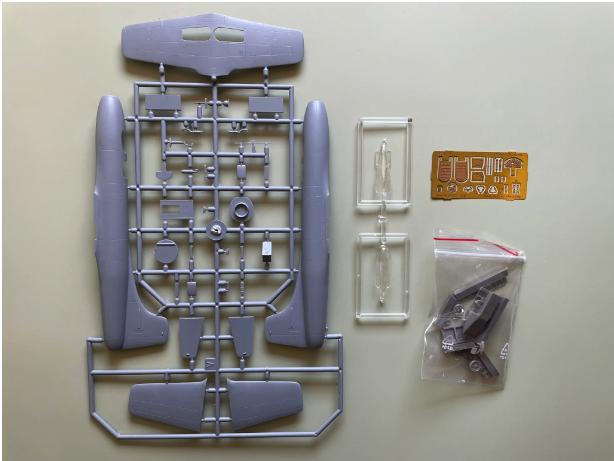
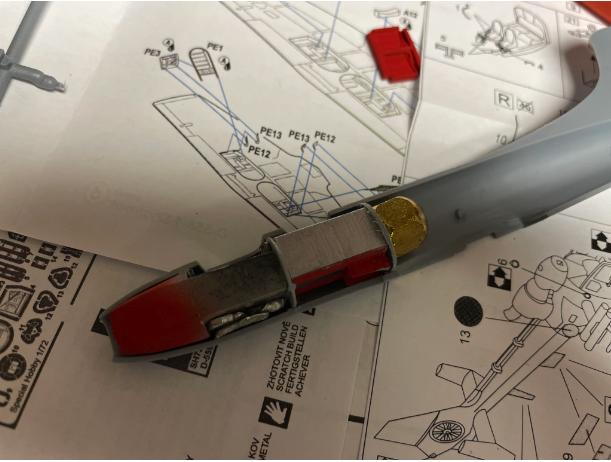
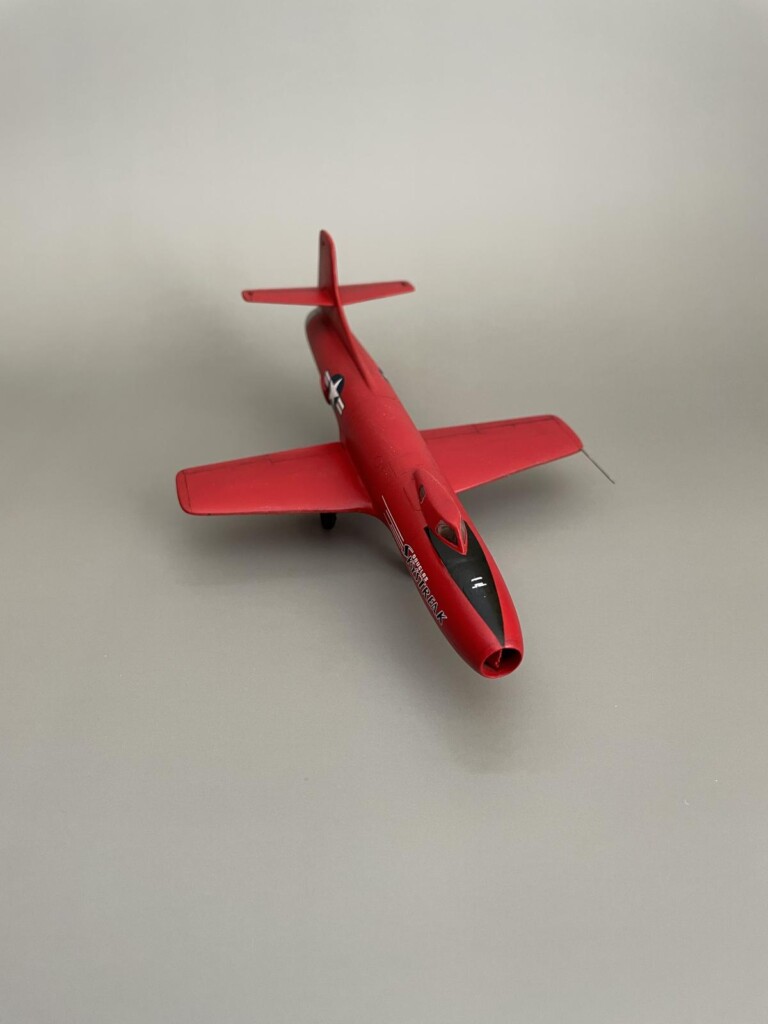
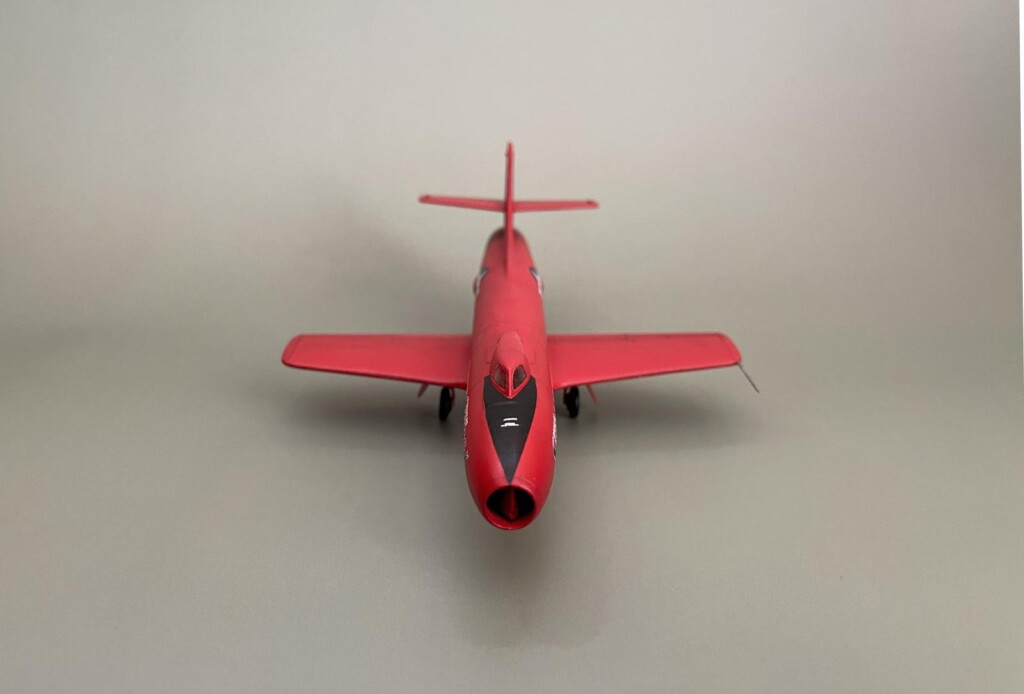
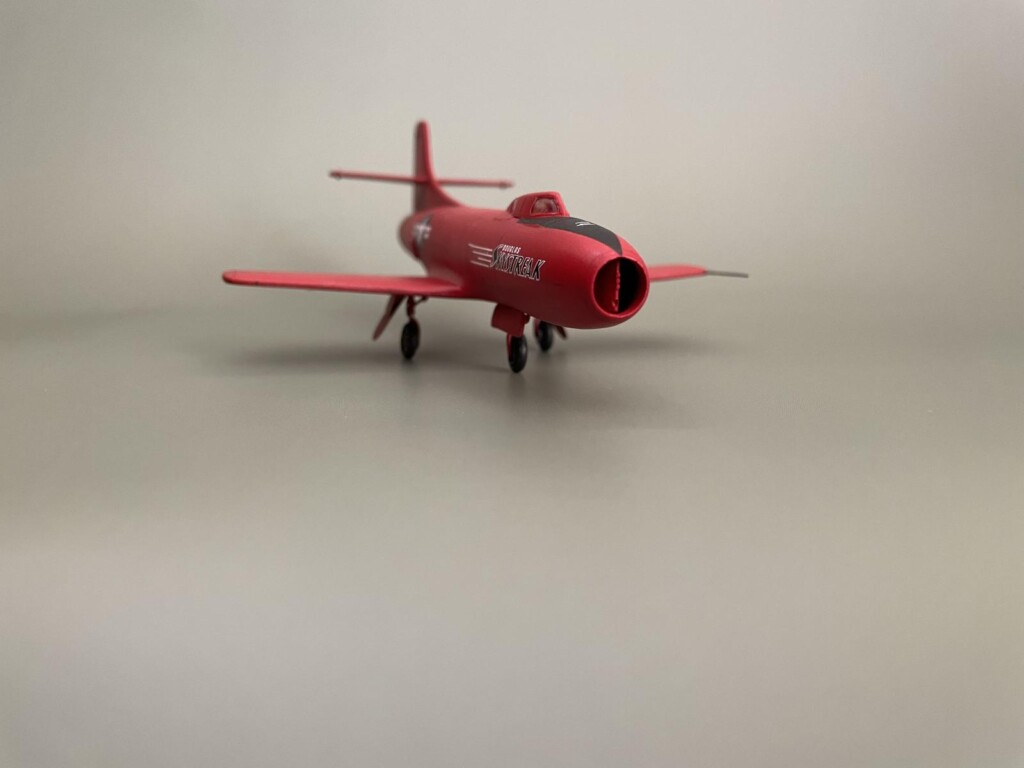
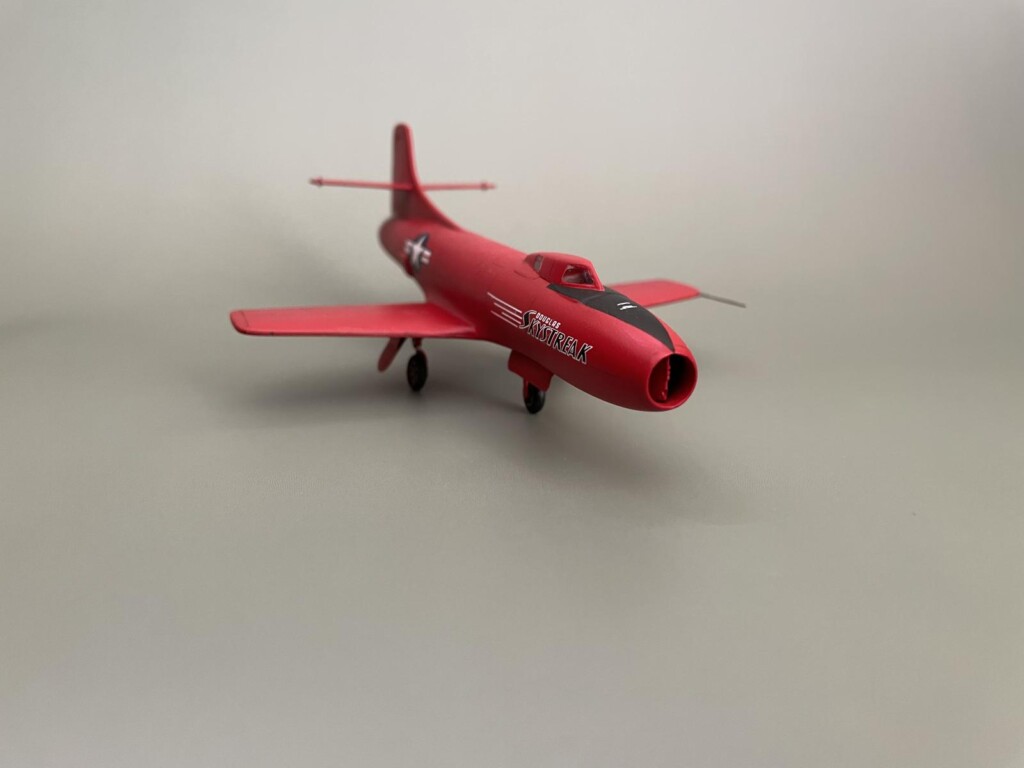
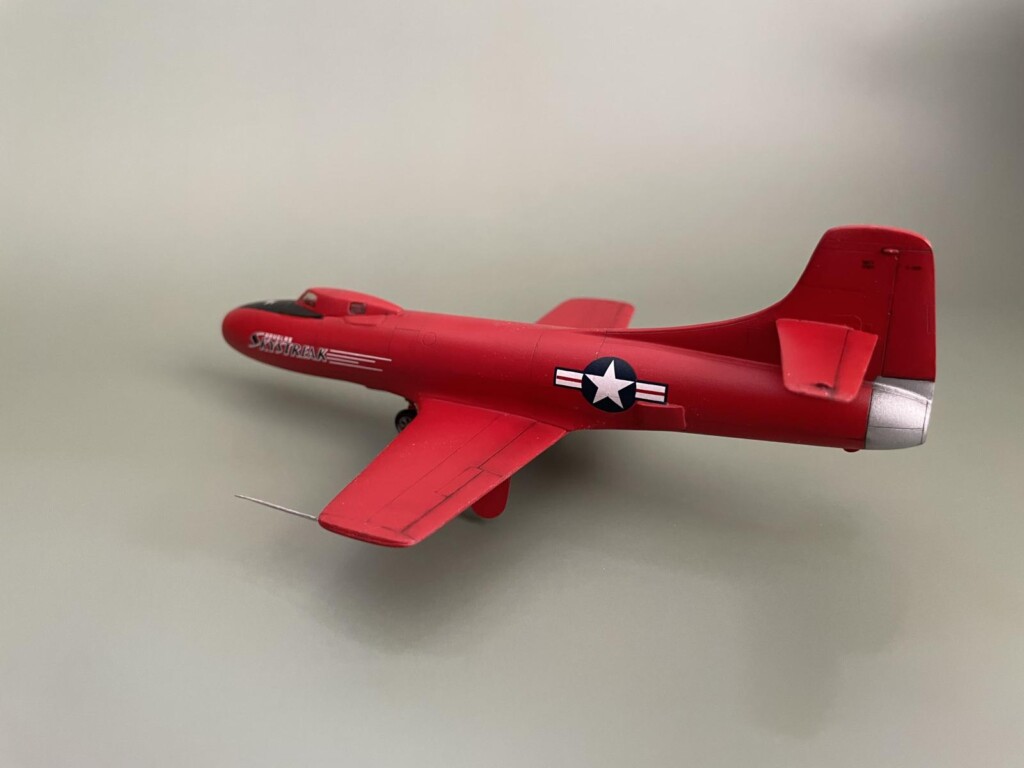
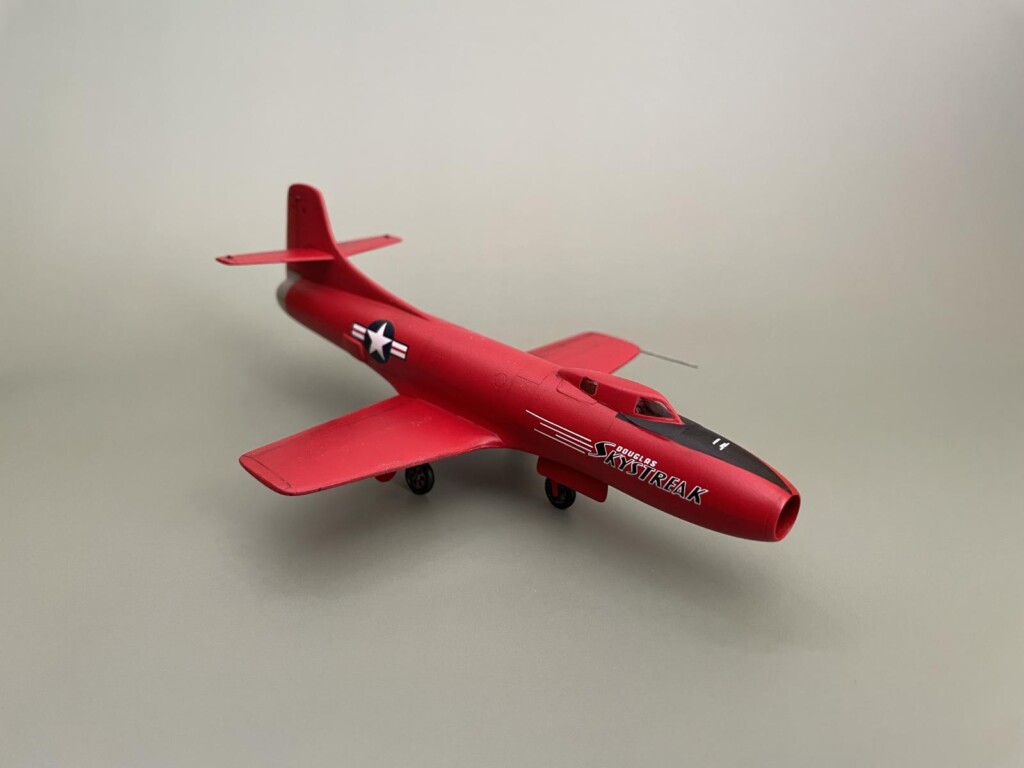
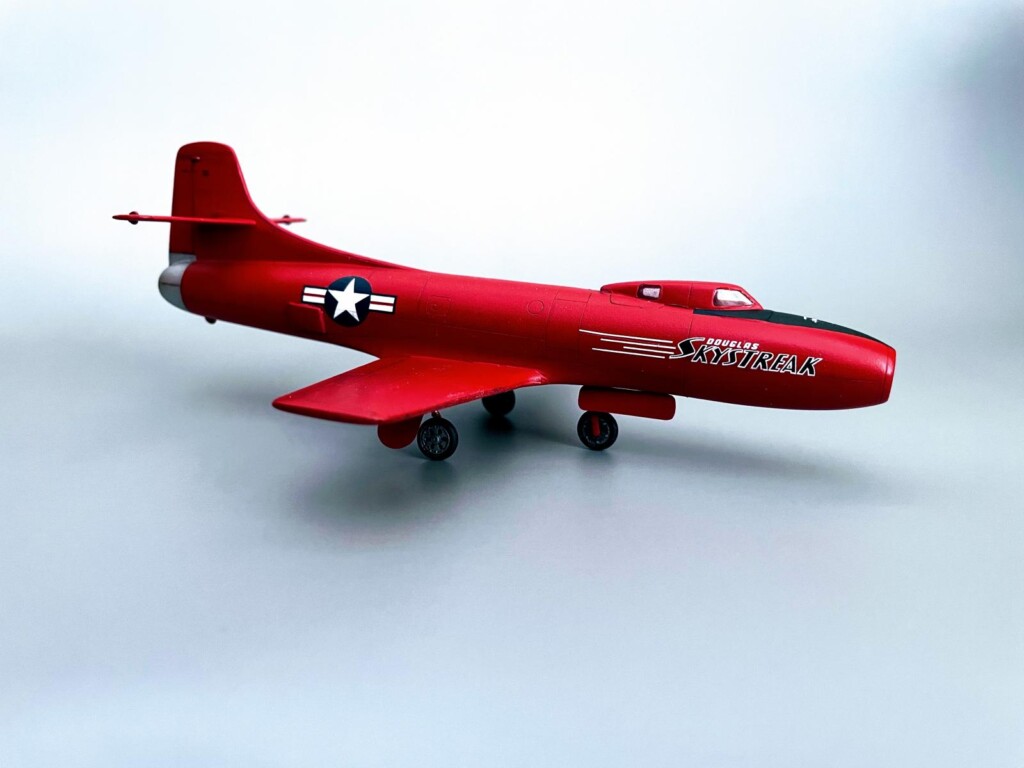

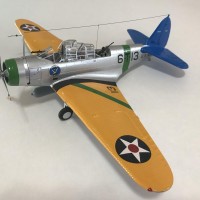
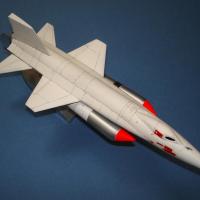
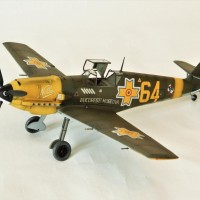
Cool and unusual. The confidence in the machine and themselves, wow it must have taken a brave man to get into a machine like that. Proved the basic layout for the F-84 series of aircraft?
No. The F-84 was in design around the same time this was first designed.
Interesting, and unusual, subject. Looks nice in that red coat!
Nice to see one of these built so well. You definitely did one better than I could.
I tried to build the 1/48 version, but it became the model that nearly broke me of the hobby. Everything that could go wrong did go wrong and after the gloss coat crazed when I polished the surface for the umpteenth time... well, it went flying into the trash can.
Super nice build, plus of a very important and interesting part of aviation history! I prefer this in red than in white, great job!
Nicely done Brian, looks good in red, I have a later boxing.
Very cool. Love that red paint job.
Excellent result and ditto article, Brian!
Well done!
A very rare subject beautifully presented, Brian @bapowellphys
Great result.
Looks great in that red colour scheme, Brian.b
Nice! Your red came out great.
Beautifully done!
I think it is a really cool looking plane also, really strikes me of what someone doing Buck Rogers or some other Sci-Fi movie would come up with. You did a nice job on this, love that paint scheme.
Well done!